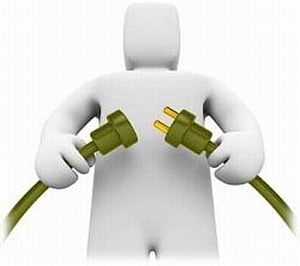How to Create a Productive Office Environment: The Basics

Employee productivity is one of the main cornerstones of a successful business. Creating a productive office environment isn’t only about the physical aspects of the office but also about communication and flexibility when your employees are at the office. In addition, the office environment should be functional and comfortable, and the space should consider the color scheme, natural light, noise level, and proximity.
This blog will cover the essential aspects of creating a productive office environment that your employees will appreciate.
What Makes a Productive Office?
Although there are a variety of factors that come into play when you’re considering how to create a productive office, here is what you should think:
Promote Productivity
The first step to creating a productive office environment is to promote productivity within your employees. To do this, make sure that they are being paid equally and fairly, and that they receive the most benefits out of their job.
In addition to this, make sure that your employees feel as if they are valued. This can be done by giving them an area where they can spread out and work as well as a place to put their belongings.
Flexible Schedules
The old-style 9 to 5 workday isn’t always the optimum way to keep office productivity high. Some employees may work better early in the morning or even late at night, while others have family commitments that need to be tended to in the afternoon. Keeping your employees’ project schedules as flexible as they can be in their line of work allows them to waste less time and complete their project tasks more smartly.
The Physical Office Environment
There’s nothing worse than a cold and sterile office environment; no one wants to work in a white box with dodgy lighting. But on the other hand, creating a comfortable and clean office space is an easy way to boost productivity when working there.
Ensure that the office is as light as possible and that things are in working order, especially in the kitchen and toilets. For example, invest in a new coffee machine if the old one isn’t up to scratch. Even investing in more minor details, such as a new toilet roll holder like these from GROHE will ensure a clean and thoughtful office environment that employees enjoy using.

Personalization
Tailoring the office space to employees’ needs is bound to boost productivity. Allow employees to have personal spaces if they want to. Hanging up family photos and adding some easy-to-care-for plants can help make the workforce feel more comfortable in the office, which helps with their motivation.
Flexible Location
Not all employees like to sit at their desks all day simply, and some don’t need the personal touch to help them with productivity. Creating an office environment that allows employees to move around the space to find the perfect place where they can be productive is a huge plus. Providing standing desks encourages healthier working habits, helping to boost employee productivity while reducing the health risks linked to sitting for long periods.
A person’s productivity changes throughout the week and even during the day. Some might want to be amongst people in the morning, while others may need a more secluded corner to get their work done. No office will be perfect, but allowing for different working conditions can drastically improve office environments. Just be sure to keep workplace safety concerns in mind.
Engagement
Learn how to communicate effectively through emails rather than setting up meetings to discuss discuss every project step. A centralized whiteboard or project management system is also an effective way to cut meeting times in half, giving employees adequate time to focus on the task at hand.
Collaborative Language and Open-Door Policy
Boost communication and a positive office environment by ensuring that employees are aware that there is an open-door policy and that they can ask questions when necessary and, won’t be turned away. This helps to give a sense of calm and ease, rather than putting up a mental or physical wall between managers and employees.
Language has a significant effect on a person’s perception. Therefore, using collaborative language when engaging with your employees will help create appreciation and personal interaction and will undoubtedly positively affect the office environment.
Team Building Exercises
It’s also essential to have team-building exercises within the office environment. Many team-building activities involve fun and social experience, with games, food, and drinks in the area where employees work. This creates a fun and social environment where employees enjoy participating.
Not only does this create positive feelings, but it also allows employees to more easily bond with each other, which builds a strong work ethic within the office.
Working from Home and Virtual Offices
Some of your employees may choose to work remotely from home. A virtual office environment may be a good option if you allow this. Virtual offices offer the same benefits as regular ones but don’t include an actual physical office.
Offices like these are designed for people who prefer working from home and need some help with organization. With virtual offices, you’ll give employees a computer with access to the internet via the corporate VPN and a dedicated space to work from. Also, learn about virtual teams.
Wrapping Up
By putting in the appropriate amount of effort based on each employee’s needs, you can create a productive office environment that makes employees feel valued and appreciated. In addition, breaking down barriers between managers and employees creates a positive work atmosphere that leads to better outcomes for both parties.
The office environment can be one of the most important and influential ways to boost employee productivity. Ensuring your employees have the right work environment is critical when improving the office space.














